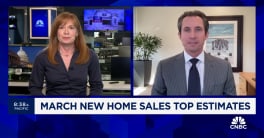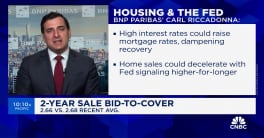Existing home sales are persistent in their inability to maintain a steady course from month to month. Despite low interest rates and hopes for a strong spring market, those sales were down 1.7 percent in June. Sales the prior month had posted a 2.5 percent increase, breaking out of a two-month slump.
The National Association of Realtors® (NAR) said sales of previously owned single-family homes, townhomes, condominiums and cooperative apartments were at a seasonally adjusted annual rate of 5.27 million during the month compared to 5.34 million in May. This is also fewer sales than the 5.39 million posted in June 2018, a loss of 2.2 percent.
Sales in May did fall within the range of estimates from analysts polled by Econoday of 5.15 to 5.45 million but failed to meet the consensus forecast of 5.320 million.
Single-family home sales also declined; falling to an annual rate of 4.69 million compared to 4.76 million in May. They were 1.7 percent lower than a year earlier. Existing condo and co-op sales fell even further, with 3.3 percent fewer sales than in May and a 6.6 percent year-over-year loss to a rate of 580,000 units.
Lawrence Yun, NAR's chief economist, provided the following analysis. "Home sales are running at a pace similar to 2015 levels - even with exceptionally low mortgage rates, a record number of jobs and a record high net worth in the country." He added that the nation is in the midst of a housing shortage and much more inventory is needed. "Imbalance persists for mid-to-lower priced homes with solid demand and insufficient supply, which is consequently pushing up home prices."
Yun commented that the poor showing for condo sales is also a bit of an inventory issue. "Condos are typically more affordable than a detached single-family home, but only a small fraction of condos are FHA-certified," he said.
Yun added that other factors could be contributing to the low number of sales. "Either a strong pent-up demand will show in the upcoming months, or there is a lack of confidence that is keeping buyers from this major expenditure. It's too soon to know how much of a pullback is related to the reduction in the homeowner tax incentive."
The median existing-home price for all housing types in June reached an all-time high of $285,700, up 4.3 percent from the June 2018 median of $273,800. It was the 88th straight month of year-over-year gains. The median existing single-family home price was $288,900, an annual increase of 4.5 percent and the median condo price gained 2.8 percent to $260,100.
There was a slight uptick in total housing inventory. At the end of June there were 1.93 million homes for sale, up from 1.91 million at the end of May. The number, however, was unchanged from one year earlier. Those unsold homes are estimated to be a 4.4-month supply at the current sales pace, up from the 4.3-month supply recorded in both May and in June 2018.
Properties typically remained on the market for 27 days in June, one day more than in both May and in June of last year. Fifty-six percent of homes sold in June were on the market for less than a month.
Interest rates, according to Freddie Mac, drifted down by 27 basis points during the month to an average of 3.80 percent. NAR President John Smaby said, "Historically, these rates are incredibly attractive. Securing and locking in on a mortgage now - given the current, favorable conditions - is a decision that will pay off for years to come."
First-time buyers accounted for 35 percent of homes sold during the month, up from 32 percent the previous month and 31 percent the prior June. As the first-time buyer share rose, that of inventor purchases dropped by 3 percentage points compared to both earlier periods to 10 percent. All-cash sales accounted for 16 percent of transactions in June, down from May and a year ago (19 percent and 22 percent, respectively). The distressed sales share - short sales and foreclosures - remained at a 2 percent total.
Compared to May, June existing-home sales rose slightly in the Northeast and Midwest but decreased in the South and West regions. Sales in all regions were still lower compared to one year ago, with the most significant declines in the Northeast and West. Median home prices rose in all regions; the most significant ones occurring in the Midwest and South.
Sales in the Northeast were up for the month, increasing by 1.5 percent to an annual rate of 680,000, but this represented a year-over-year drop of 4.2 percent. The median price in the Northeast was $321,200, up 4.8 percent from June 2018.
Existing-home sales in the Midwest inched up 1.6 percent to an annual rate of 1.25 million this month, although they remain 1.6 percent shy of their annual pace at the same time last year. The median price rose 6.7 percent to $230,400.
The South saw sales slip by 3.4 percent to a 2.25 million pace, missing the year-earlier rate by 0.4 percent. The median price rose 4.9 percent to $248,600.
Sales in the West fell by 3.5 percent to an annual rate of 1.09 million and are now down 5.2 on an annual basis. Prices continue to rise with a 2.3 percent annual gain in June to a median of $410,400.







